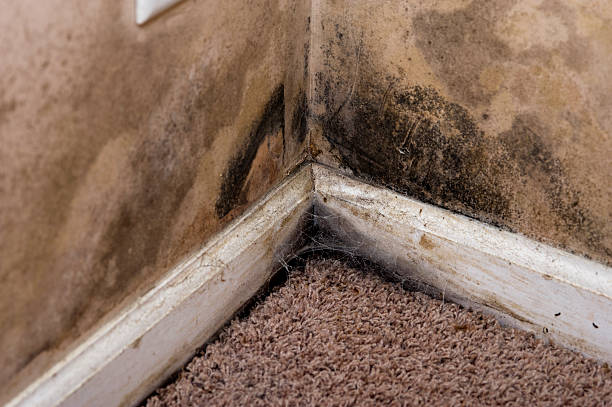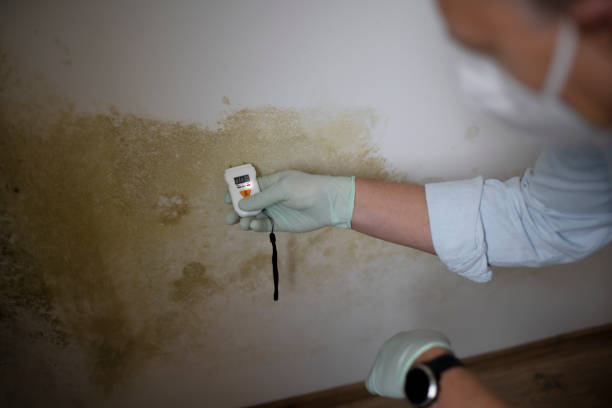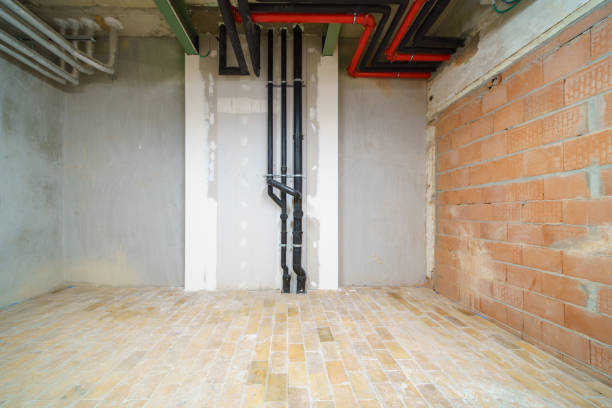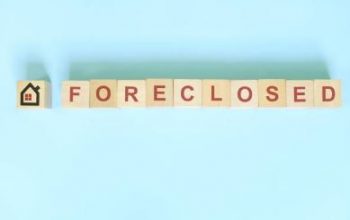A bowing basement wall may indicate serious structural problems with your home. It’s imperative to take action right away if the walls of your basement are sloping inward.
We are unsure whether it would be wise to purchase a home with bowing basement walls. Someone could get hurt if the walls crumble.
See how a bowed basement wall can be fixed below, along with an explanation of what being bowed means.
Table of Contents
Should I Buy a House With Bowing Basement Walls?
We are unsure whether it would be wise to purchase a home with bowing basement walls. An individual could be hurt if the walls crumble.
There are a few things to consider if you’re thinking about buying a house with bowing basement walls. First, you should take into account the cost of repairs for this kind of damage when planning your budget. Second, you should be ready for the possibility that the issue will worsen over time. Finally, you should make sure you’re getting a good deal on the home overall since the repairs could end up being a significant expense. Having said that, if you’re still interested in the house, make sure to get a detailed inspection done to evaluate the damage and obtain a repair estimate.
Is the Bowing Wall Ok for the Basement?
When the bowing of concrete blocks exceeds 2 inches, they should be straightened. In the event that the wall cracks or moves more than one inch in any one direction, it should be straightened. Your basement should be inspected by a certified contractor.
The most frequent reason for bowed basement walls is an excessive amount of moisture around your home. Your foundation may experience significant pressure from even natural groundwater. Additional factors like excessive storm runoff or poor drainage have the potential to significantly increase the amount of moisture in the soil.
It could be a sign of serious structural problems if your basement wall bows. If your basement walls are leaning inward, it’s critical to act soon.

How Much Basement Wall Bowing is Acceptable?
There are a few things to keep in mind when considering how much basement wall bowing is acceptable. The extent of the bowing will first depend on how severe it is. If the bowing is severe, it might be a sign that there is a structural problem that needs to be fixed. However, if the bowing is only slight, it might not be a problem. Second, the amount of bowing that is acceptable will depend on the type of foundation you have. For example, poured concrete foundations have a much higher propensity to bow than block foundations. Finally, seek advice from a qualified individual regarding the appropriate level of bowing in your specific circumstance.
How Do You Measure a Bowed Wall?
There are a few different methods for measuring a bowed wall. The use of a level is one option. Place the level against the wall and observe where the bubble rests in relation to the level’s lines. A level wall results from the bubble being in the center of the level. The wall bows left if the bubble is off-center from the center line. The wall is bowed to the right if the bubble is to the right of the center line.
Using a measuring tape is another method for gauging a bowed wall. The width of the bow at its widest point is measured from the top of the wall to the bottom of the wall. This?
Use a level and a tape measure to gauge the length of a bowed wall. First, make a mark at the wall’s highest point. Next, make a mark at the wall’s lowest point. Finally, measure the distance between the two marks. You will then know the wall’s height as a result.
How to Fix a Bowed Basement?
Several things can be done to straighten out a bowed basement. To start with, you must pinpoint the issue’s origin. You must hire a specialist to repair the foundation if there is a problem. You can attempt to repair the walls yourself if that is the issue. Depending on the severity of the issue, there are a few different methods for fixing bowed walls.
There are a few DIY solutions you can try if the walls in your basement are bowing. First, try to determine the cause of the problem. You must deal with the water source before you can fix the walls if the bowed walls are the result of water damage. You can start fixing the damage by removing any damaged drywall and replacing it with new drywall once the source of the water has been eliminated. If the problem is not due to water damage, you may be able to fix the problem by simply installing new wall supports.
Things You Need to Know About Bowing Basement Wall
Begin by speaking with the homeowner to find out what was wrong with the foundation, who repaired it, and how it was repaired. After you’ve figured out those details, you may start looking into the issue and potential solutions. Your mind should be at ease knowing that the issue was correctly located and fixed.
You should request a thorough explanation from the contractor if it causes you any additional concerns. You may require written or verbal consent from the current homeowner before the contractor can discuss the repair’s specifics with you.
Bowing walls can also crack, as seen in the image above. These cracks in the wall could actually open and close depending on the weather. They may open when it’s raining and close when the soil dries out, or vice versa.

Reasons Behind Bowing Basement Walls
Hydrostatic pressure is the main reason that walls bow. When the ground around your home becomes completely saturated with water, hydrostatic pressure is produced. It pushes up against the foundation as the soil swells.
Insurance covers foundation damage resulting from a covered calamity like a flood, fire, or storm. Keep in mind that insurance rarely pays out for damage to a foundation brought on by tree roots or by the settling and shifting of the ground.
We advise using carbon fiber straps to repair a bowing basement wall. The simplest and most economical to install, these are most effective on walls that bend inward by no more than 2 inches. They can be epoxy-glued to the wall at the top and bottom of these straps.
Stabilize Your Bowing Basement Walls
Carbon fiber straps are commonly used to strengthen bowed basement walls. These are put on the wall of the basement directly. However, wall anchors help you straighten out your walls again. These anchors are buried in your yard, close to your foundation, in a solid, compacted area of soil.
Both you and your lender will not ignore foundation issues. No matter how minute the foundation flaws appear to be, they must not be disregarded. Even if you’re willing to overlook them, your lender won’t.
Once the foundation damage has been fixed to your satisfaction, you’ll want to find out more about the repair warranty. On the other hand, while the majority of contractors offer warranties for their work, not all of them permit warranty transfers to new owners. Others demand a transfer fee or restrict the availability of warranties to customers who agree to a yearly maintenance fee.
Fixing Basement Walls Or Foundation Issues is Time-Taking
Although not insignificant, foundation issues can usually be fixed. If this is the case, complete foundation repairs are necessary, which may involve raising the house to build new foundation piers to level it out and strengthen the current foundation.
If your house is built on a crawlspace and is sinking in the middle rather than the exterior, you might be able to repair it yourself. A professional foundation repair contractor should be hired right away if your property is on a slab or is shifting near the edge of a crawl space.
One common technique for strengthening basement walls is to install vertical carbon fiber strips. Because of its incredible durability, carbon fiber is five times more powerful than steel. It additionally has the benefit of not being toxic, corrosive, or explosive.
Final Thoughts
It’s not the worst choice to purchase a house that might require work on the basement’s bowing walls. However, it must be deemed structurally sound. Make sure to ask the home’s seller to have the walls thoroughly inspected and certified as sound. Not a good combinations are foundation cracks and bowing basement walls. It might be deemed unsafe to occupy the building. Before you go purchasing a home with bowing basement walls, reach out to Liberty Inspections for a home inspection in the Western, KY, Fort Campbell, KY, and Middle Tennessee areas.



